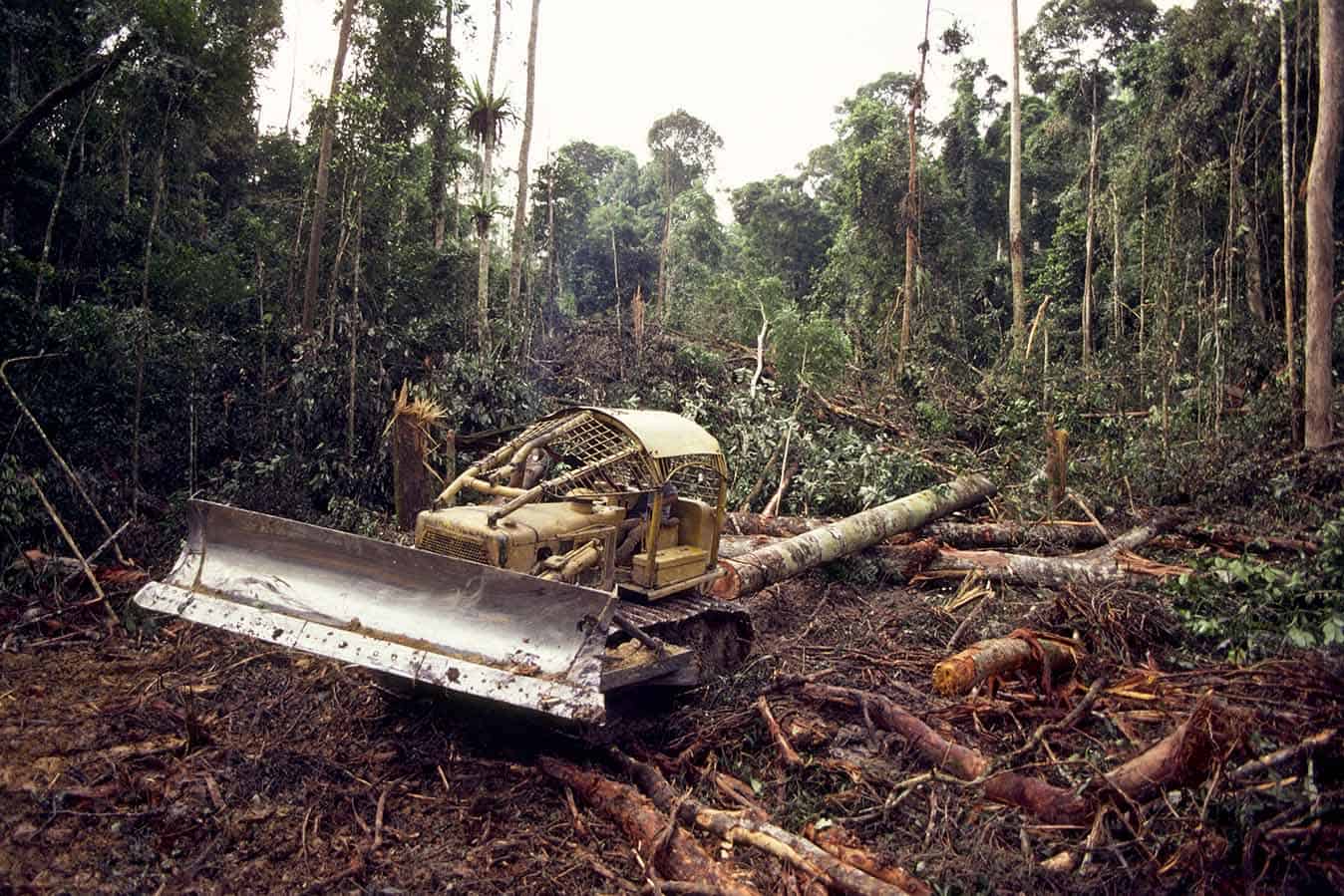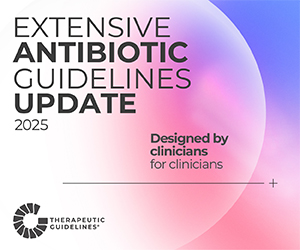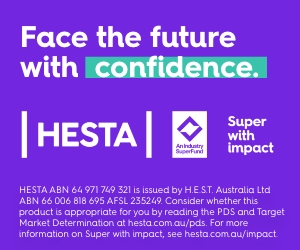We are in the midst of a climate crisis. Almost half of the world’s forests have been cut down, four hundred billion tonnes of ice are melting every year, sea levels and temperatures are rising, weather patterns have become unstable, rainfall is decreasing, and global emissions are rapidly increasing.
Across 185 countries there have been a wave of climate protests, from the Extinction Rebellion’s civil disobedience, to the United Nation Climate Summit protests; to youth climate activist Greta Thunberg and students who have protested across the globe; there is demand for action on climate change.
The Australian Nursing and Midwifery Federation (ANMF) have identified the ‘Climate Emergency’ as a key priority for 2020.
The public are demanding that the government expand measures to reduce carbon emissions to net zero by 2025, to act on drought management, to tackle the plastics problem, and find solutions for the energy crisis and alternatives to the burning of fossil fuels.
With the 2030 target of 26-28% reduction in emissions nowhere near expected to be met; nurses and midwives have been called to campaign and support action to reduce carbon emissions.
We are told to ‘refuse, reduce, reuse, rot, recycle; to take shorter showers, use water saving shower heads, turn taps off , walk or cycle instead of drive, switch to clean energy and turn appliances off at the wall when not in use; yet global emissions continue to rise.
But what if the single most powerful action you could take, was to change the way you eat?
In 2010 the United Nations (UN) called for a move toward plant-based diets and a reduction in animal products in order to save the environment from the impact of climate change. The UN Food and Agriculture Organization identified the need for a order to feed a predicted 9.1 billion people.
As the demand for food increases, the consumption of animal products substantially increases having large environmental impacts increasing greenhouse gas emissions, land use and fresh water use. Globally animal agriculture is the leading cause of deforestation, species extinction, biodiversity loss, ocean dead zones, and ocean acidification.
Animal agriculture is the second leading cause of human made green-house gas emissions after the energy sector; responsible for 51% of carbon emissions, 18% of all greenhouse gas emissions, 80% of all water used and 80% of forest clearing. There have been numerous reports released over the past 10 years outlining the impact animal agriculture is having on climate change.
As food demand increases with a growing global population, the demand for animal products are growing, carbon emissions are rising, the planet is warming and climate experts warn, we are facing a catastrophic climate emergency.
Every year 56 billion livestock animals are bred and killed for human consumption.
Agriculture is also the number-one user of water, responsible for up to one third of all fresh water consumption in the world today.
With drought a constant issue in Australia, we are reminded to ‘make every drop count’.
According to the Victorian government’s Target 155 initiative, taking a shorter shower saves around 20 litres of water; but comparatively, a single beef burger patty takes 2,500 litres of water to produce, which is equal to four months of shorter showers!
Eating a plant-based diet is estimated to save over 1.5 million litres of water a year.
Consuming animal products also requires more land to feed a person – eighteen times that required to feed a person eating a plant-based diet.
While there are economic arguments for ensuring efficient agricultural land use; there is also a significant environmental argument that cannot be ignored as we face a global climate crisis. One hundred and thirty six million acres of rainforest have been cleared for animal agriculture, and every day, up to 137 plant, animal and insect species are lost, due to rainforest destruction.
This is signifi cant, as forests absorb and store large amounts of CO², which is released into the atmosphere when cleared or burnt. Repurposing agricultural land to grow food for humans, instead of livestock; and re-establishing forests are important in reducing greenhouse gas emissions and slowing global warming.
Oceans are also being destroyed by agriculture, with around 2.7 trillion marine animals pulled from the ocean every year.
Three quarters of the oceans are now depleted or near-depleted, with a prediction that we could see fishless oceans by 2048.
Secondary to nutrient rich run off from feedlots, farming and industrial pollution; oceans are becoming acidic, promoting algae growth which dies and decomposes, absorbing the oxygen out of the ocean, and killing marine life.
This has caused 400 dead zones around the world. Dead zones are worsened by climate change, but with global warming increasing, it is likely ocean dead zones will grow.
Climate change is real and human activity is the cause. With the climate crisis now declared an emergency by 45 countries around the world; much as we have had to do during the Covid-19 pandemic; individuals have a responsibility to change behaviours, and make different choices to minimise their carbon footprint. As ANMF members, heathcare professionals and role models for the community, we have a moral obligation to be the advocates that make the changes required to tackle the climate emergency.
References
Borunda, A 2019, Methane explained’, National Geographic, retrieved 6 May 2020, www.nationalgeographic.com/environment/global-warming/methane/
Butler, R 2009, Brazilian beef giant announces moratorium on rainforest beef, Mongabay, retrieved 6 May 2020, https://news.mongabay.com/2009/08/brazilian-beef-giant-announces-moratorium-on-rainforest-beef/
Butler, R 2020, Amazon destruction, Mongabay, retrieved 6 May 2020, https://rainforests.mongabay.com/amazon/amazon_destruction.html
Climate Council 2018, Australia’s rising greenhouse gas emissions, retrieved 6 May 2020, www.climatecouncil.org.au/wp-content/uploads/2018/06/CC_MVSA0143-Briefing-Paper-Australias-Rising-Emissions_V8-FA_Low-Res_Single-Pages3.pdf
Climate Nexus, Animal agriculture’s impact on climate change, retrieved 6 May 2020, https://climatenexus.org/climate-issues/food/animal-agricultures-impact-on-climate-change/
Commonwealth Scientific and Industrial Research Organisation 2016, Climate change in Australia: projections for Australia’s NRM regions, retrieved May 2020, www.climatechangeinaustralia.gov.au/en/climate-campus/climate-system/greenhouse-gases/
Dateline 2018, What’s behind the rise of extreme vegan activists? retrieved 6 May 2020, www.youtube.com/watch?v=t71p-0NmGB0
Dean, A 2019, Deforestation and climate change, Climate Council, retrieved 6 May 2020, www.climatecouncil.org.au/deforestation/
Department of the Environment and Energy Australian Government 2015, Australia’s 2030 climate change target, retrieved 6 May 2020, www.environment.gov.au/climate-change/publications/factsheet-australias-2030-climate-change-target
Department of Primary Industries and Regional Development 2019, Reducing livestock greenhouse gas emissions, Government of Western Australia, retrieved 6 May 2020, www.agric.wa.gov.au/climate-change/reducing-livestock-greenhouse-gas-emissions
Earthsave International, Our food our future: making a difference with every bite: the power of the fork, retrieved 6 May 2020, www.earthsave.org/pdf/ofof2006.pdf
Eshel, G, Shepon, A, Makov, T & Milo, R 2014, Land, irrigation water, greenhouse gas, and reactive nitrogen burdens of meat, eggs, and dairy production in the United States, PNAS, vol. 11, no. 33, pp. 11997 – 12001.
Extinction Rebellion 2020, We are in a climate emergency, retrieved 6 May 2020, https://ausrebellion.earth/
Fishcount 2019, Fish count estimates, retrieved 5 May 2020, http://fishcount.org.uk/fish-count-estimates-2
Fleming, S 2019, This is how much water is in your burge, World Economic Forum, retrieved 4 May 2020, www.weforum.org/agenda/2019/02/this-is-how-much-water-is-in-your-burger/
Food and Agriculture Organization of the United Nations 2009, 2050: a third more mouths to feed, retrieved 6 May 2020, www.fao.org/news/story/en/item/35571/icode/
Gibbs, D, Harris, N & Seymour, F 2018, By the numbers: the value of tropical rainforests in the climate change equation, Word Resources Institute, retrieved 6 May 2020, www.wri.org/blog/2018/10/numbers-value-tropical-forests-climate-change-equation
Global Footprint Network 2020, Climate change, retrieved 6 May 2020, www.footprintnetwork.org/our-work/climate-change/
Goodland, R & Anhang, J 2009, Live stock and climate change, World Watch, retrieved 6 May 2020, http://templatelab.com/livestock-and-climate-change/
Hickman, M 2009, Study claims meat creates half of all greenhouse gases, The Independent, retrieved 6 May 2020, www.independent.co.uk/environment/climate-change/study-claims-meat-creates-half-of-all-greenhouse-gases-1812909.html
International Energy Agency 2020, World energy outlook, retrieved 5 May 2020, www.iea.org/topics/world-energy-outlook
Keledijian, A, Brogan, G, Lowell, B, Warrenchuk, J, Entickmap, B, Shester, G, Hirshfield, M & Cano-Stocco, D 2014, Wasted catch: unsolved problems in US fisheries, Oceana, retrieved 6 May 2020, https://oceana.org/sites/default/files/reports/Bycatch_Report_FINAL.pdf
Laville, S & Watts, J 2019, Across the globe, millions join biggest climate protest ever, The Guardian, retrieved 6 May 2020, www.theguardian.com/environment/2019/sep/21/across-the-globe-millions-join-biggest-climate-protest-ever
Melbourne Water 2020, Using and saving water at home, retrieved 6 May 2020, www.melbournewater.com.au/using-and-saving-water-home
Mood, A & Brooke, P 2010, Estimating the number of fish caught in global fishing every year, retrieved 5 May 2020, www.fishcount.org.uk/published/std/fishcountstudy.pdf
NASA 2020, The world counts: melting ice cap facts, retrieved 6 May 2020, www.theworldcounts.com/counters/why_is_climate_change_important/melting_ice_caps_facts
National Ocean Service 2019, What is a dead zone?, National Oceanic and Atmospheric Administration US Department of Commerce, retrieved 6 May 2020 https://oceanservice.noaa.gov/facts/deadzone.html
Nunez, C 2019, Deforestation Explained, National Geographic, retrieved 4 May 2020, www.nationalgeographic.com/environment/global-warming/deforestation/
Oppenlander, RA 2013, Food choice and sustainability: why buying local, eating less meat, and taking baby steps won’t work, Langdon Street, Minneapolis, MN.
Ripple, W, Wolf, C, Newsome, T, Barnard, P & Moomaw, W 2020, World scientists warning of a climate emergency, Bioscience, vol. 70, iss. 1, pp. 8 – 20.
Ritchie, H & Roser, M 2019, Meat and dairy production, University of Oxford, retrieved 6 May 2020, https://ourworldindata.org/meat-production
Sarac, K 2013, Reducing water demand, Australian Government, retrieved 6 May 2020,
www.yourhome.gov.au/water/reducing-water-demand
Save The Amazon, The disappearing rainforest, retrieved 6 May 2020, www.savetheamazon.org/rainforeststats.htm
Scheer, R & Moss, D 2012, What causes ocean dead zones, Scientific American, retrieved 6 May 2020, www.scientificamerican.com/article/ocean-dead-zones/
Schwab, D, Smith, M, Sellers, H, Munsch, J & Paine, L 2012, Grass fed and organic beef: production costs and breakeven market prices, 2008 and 2009, University of Iowa: Animal Industry Report, retrieved 6 May 2020, https://lib.dr.iastate.edu/cgi/viewcontent.cgi?referer=&httpsredir=1&article=1722&context=ans_air
Smart Watermark 2020, Victoria smart water advice: saving water in the home, retrieved 6 May 2020, /www.smartwatermark.org/smartwateradvice/saving-water-home/bathroom/
Sustainability Victoria 2008, Resource Smart Recycling and reusing in the workplace, retrieved 6 May 2020, file:///C:/Users/tiffa/Downloads/Archive%20RS%20Recycling%20and%20reusing%20in%20your%20workplace%20Jun%202008.pdf
The Livestock Environment and Development Initiative 2006, Livestock’s Longshadow: environmental issues and options, retrieved 5 May 2020,
www.eia.gov/environment/emissions/ghg_report/pdf/0573%282009%29.pdf
United Nations 2020, Facts about the climate emergency, retrieved 6 May 2020, www.unenvironment.org/explore-topics/climate-change/facts-about-climate-emergency
US Energy Information Administration 2011, Emissions of greenhouse gasses in the United States 2009, retrieved 5 May 2020, www.fao.org/3/a0701e/a0701e.pdf
Vidal, J 2010, Protect nature for world economic security, warns UN biodiversity chief, The Guardian, retrieved 6 May 2020, www.theguardian.com/environment/2010/aug/16/nature-economic-security
Wikipedia 2020, Climate Change in Australia, retrieved 6 May 2020, https://en.wikipedia.org/wiki/Climate_change_in_Australia
Wikipedia 2020, Greta Thunberg, retrieved 6 May 2020, https://en.wikipedia.org/wiki/Greta_Thunberg
World Wildlife Fund 2018, Impacts of global warming, retrieved 6 May 2020, www.wwf.org.au/what-we-do/climate/impacts-of-global-warming#gs.uqosxk
Worm, B, Barbier, EB, Beaumont, N, Duffy, E, Folke, C, Halpern, BS, Jackson, JB, Lotze, HK, Micheli, F, Palumbi, SR, Sala, E, Selkoe, KA, Stachowicz, JJ & Watson, R 2016, Impacts of biodiversity loss on ocean ecosysyem services, Science, vol. 314, pp. 787 – 790.
Zeilinski, S 2014, Ocean dead zones are getting worse due to climate chang’, Smithsonian magazine, retrieved 6 May 2020, www.smithsonianmag.com/science-nature/ocean-dead-zones-are-getting-worse-globally-due-climate-change-180953282/
Author
Tiffany Frandsen RN, Midwife, BNS, BM, MMHN, Grad Cert Primary Maternity Care is studying a Grad Cert of Human Nutrition








